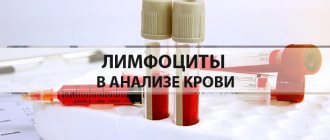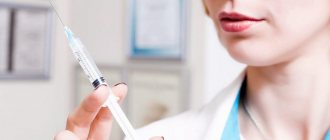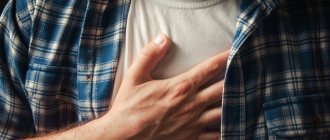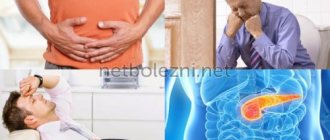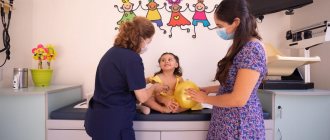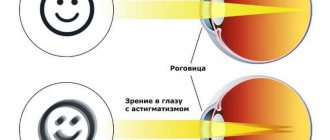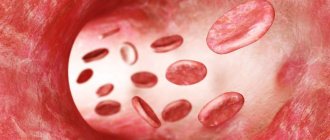Bilirubin metabolism disorders
Erythrocytes - red blood cells - contain a complex protein called hemoglobin. It is necessary for the transport of oxygen through human tissues. Having served its term, it enters the liver, spleen, bone marrow, where it is destroyed. Among the breakdown products is indirect bilirubin, which is pathogenic for the body. Therefore, under the influence of other components, it goes through the next stage of transformation, and is released along with liver bile and leaves the body naturally.
If bilirubin is not neutralized, or the process does not affect most of the substance, it turns into biliverdin, an oxidation product. Increased levels lead to jaundice. In some cases, the skin may become greenish. This is due to the high concentration of direct bilirubin in the blood, since in this form it oxidizes faster.
Causes of hyperbilirubinemia
- Accelerated breakdown and/or shortening of red blood cell life.
- Impaired production of substances necessary for the breakdown of bilirubin.
- Decreased absorption of bilirubin by liver cells.
- Decreased excretion of pigment from the liver into bile.
- Obstructed outflow of bile and its penetration into the blood.
There are many causes of bilirubin metabolism disorders, including cholelithiasis, liver diseases, including cirrhosis, tumors and chronic hepatitis. Hyperbilirubinemia can also be caused by parasites that reduce the body’s ability to excrete bilirubin, exposure to toxic substances, anemia, etc.
Depending on the stage of disruption of the conversion and output process, an increase in the level of one of the fractions is diagnosed in the blood. If total bilirubin is high, this indicates liver disease. An increase in indirect bilirubin means excessive destruction of red blood cells or impaired transport of bilirubin. High level of direct - problems with the outflow of bile.
Causes of urobilinogenuria with bilirubinuria
The simultaneous presence of urobilinogens and bilirubin in the urine is characteristic of parenchymal jaundice, i.e. liver diseases. Detection of these 2 laboratory analytes is an important step in the differential diagnosis of jaundice. The combination of bilirubinuria and urobilinogenuria is observed at the onset of acute liver disease (for example, in the pre-icteric stage of acute viral hepatitis) or in the presence of a chronic inflammatory process in the liver tissue (autoimmune hepatitis, chronic viral hepatitis).
Hereditary disorders
Gilbert's syndrome
. A harmless form with a favorable course. The reason is a violation of the uptake and transport of bilirubin by liver cells. Unconjugated (unbound) bilirubin increases in the blood.
Rotor syndrome
. It is expressed in a violation of the uptake of bilirubin and, as a result, its removal from the body. It appears at an early age and does not lead to serious consequences.
Dubin-Johnson syndrome
. A rare form of conjugated hyperbilirubinemia. The transport system is disrupted, which causes difficulties in removing bound bilirubin. The syndrome does not lead to dangerous conditions, the prognosis is favorable.
Crigler-Najjar syndrome
. Severe form of unconjugated hyperbilirubinemia. The reason is the lack or complete absence of glucuronyl transferase, a substance necessary for the conjugation of bilirubin in the liver. Causes damage to the nervous system and can lead to premature death.
Timely diagnosis, pathogenetic therapy, proper nutrition, work and rest schedules can qualitatively improve the lives of most patients with hereditary hyperbilirubinemia.
Additionally
“Hepatoprotectors” are substances that can perform or facilitate the detoxification function, used for liver and other failures, as well as in cases of poisoning. This list is not a panacea, but, according to the author, when taken together with many drugs that are unpleasant for the liver (for example, non-steroidal anti-inflammatory drugs), it can minimize the negative consequences for the body.
- Ursodeoxycholic acid is an epimer of chenodeoxycholic acid. A non-toxic component of bile, it facilitates the digestion process. Ursosan enhances lipase activity, has a hypoglycemic effect, and enhances gastric and pancreatic secretion. Has an immunomodulatory effect. Reduces cholesterol levels in bile. Helps maintain the normal condition of people, for example, with Gilbert's syndrome, hereditary liver pathology (familial non-hemolytic jaundice)
- Acetylcysteine is a precursor to glutathione, which in turn is involved in neutralizing toxins. The antioxidant effect of acetylcysteine/glutathione is based on the ability of thiol groups –SH to bind to oxidative radicals [4].
- Taurine is an “angioprotector” and helps normalize vascular function [5]. It also binds to bile acids, providing a weak hepatoprotective effect.
Normal bilirubin level in blood
The level of bilirubin depends on the age and condition of the person.
In newborns, the maximum level of bilirubin reaches the 3rd - 5th day of life, the so-called physiological jaundice. Sometimes it reaches 256 µmol/l. The level should normalize on its own by the 2nd week of life. If the level exceeds 256 µmol/l, immediate examination of the child is required. This condition can lead to brain damage.
No less dangerous is an increase in bilirubin levels during pregnancy. This can cause premature birth, anemia and fetal hypoxia.
Symptoms
Abnormalities in the chemical reactions of bilirubin are detected by determining its level in the blood. If the concentration is higher than normal, but does not exceed 85 µmol/l, this is a mild form of hyperbilirubinemia, up to 170 µmol/l is moderate, and from 170 µmol/l is a severe form of the disease. External signs manifest themselves differently, depending on the cause of the increase in bilirubin concentration.
- Liver problems are expressed in the following symptoms:
- Discomfort and heaviness due to liver enlargement.
- Change in urine color (it becomes like dark beer), lightening of stool.
- Heaviness after eating, drinking alcohol, frequent belching.
- Periodically occurring dizziness, general weakness, apathy.
If the cause of the pathological condition is viral hepatitis, then elevated body temperature is added to the symptoms.
- Violation of bile outflow:
- Yellowness of the skin and sclera.
- Itchy skin.
- Intense pain in the right hypochondrium.
- Flatulence, constipation or diarrhea.
- Dark urine, light stool.
A common cause is gallstone disease. The list functions normally, neutralizes incoming bilirubin, but its removal from the body is difficult.
Prehepatic jaundice
- a condition caused by the rapid destruction of red blood cells. Expressed by the following symptoms:
- Anemia.
- Dark stools with normal urine color.
- Extensive hematomas that form without external causes.
- Skin itching, worse at rest and after warming up.
- Yellowish skin color.
Also, sometimes, regardless of the cause, symptoms such as bitterness in the mouth, changes in taste, weakness, impaired memory and intelligence may be observed.
Causes of urobilinogenuria
Urobilinogens are derivatives of bilirubin. Their detection in urine is considered an important diagnostic tool. The presence of urobilinogens in urine can occur with increased destruction of red blood cells (hemolytic conditions), lesions of the liver parenchyma, and increased reabsorption in the distal colon.
In viral hepatitis, urobilinogenuria reaches maximum values at the onset of the disease, then gradually decreases and is practically undetectable during the height of the disease and increases again during recovery. Diseases in which urobilinogenuria occurs:
- Diseases accompanied by hemolysis
: hemolytic anemia, hemoglobinopathies, conditions after blood transfusions. - Liver diseases
: viral, toxic hepatitis, liver cancer. - Intestinal diseases
: enterocolitis, prolonged constipation, intestinal obstruction.
Diagnostics
Doctors are faced with the task of reducing bilirubin levels to normal limits, and this can only be done by knowing the reason for its increase. Therefore, after a blood test to determine the concentration of bilirubin, the following tests are also performed:
- on the level of alkaline phosphatase;
- alanine aminotransferase activity;
- presence of glucuronyl transferase and other studies.
An ultrasound of the liver is also prescribed to determine its condition. Laboratory tests include: general blood and urine analysis, level of total coproporphyrin in daily urine, phenobarbital test, bromsulfalein test, test for markers of hepatitis viruses.
The purpose of diagnosis is not only to determine the level of bilirubin, but also its form. For example, an increase in direct bilirubin occurs when bile flow is impaired (dyskinesia). The concentration of indirect bilirubin increases due to liver problems and excessive destruction of red blood cells. Having established the form of bilirubin, it is necessary to differentiate the specific disease (pathology).
Increased direct bilirubin
The direct enzyme begins to accumulate in the blood due to a disruption in the process of bile outflow. Instead of going into the stomach, it enters the bloodstream. This condition occurs with hepatitis of bacterial and viral etiology, chronic, autoimmune, and drug-induced hepatitis. It can occur with cholelithiasis, cirrhosis, oncological changes in the liver, cancer of the gallbladder or pancreas. Be a consequence of congenital Rotor syndrome (a milder form of a defect in bilirubin excretion) or Dubin-Johnson syndrome (a more severe form).
Increased indirect bilirubin
The reason is the rapid breakdown of red blood cells. It can occur as a complication of sepsis, acute intestinal infection, congenital, toxic, acquired autoimmune anemia.
An increase in the indirect form of bilirubin also occurs with Gilbert's syndrome. This is a benign, chronic disease caused by disruption of the intracellular transport of bilirubin. Among the causes of hyperbilirubinemia, Crigler-Najjar syndrome is a disruption of the process of combining bilirubin with glucuronic acid, formed during the oxidation of D-glucose.
The Lucy-Driscol symptom is unusual. It occurs exclusively in infants due to breastfeeding. Breast milk contains an enzyme that disrupts the conjugation of bilirubin. With the transition to artificial feeding, the disease goes away. However, indirect bilirubin is very dangerous, so the occurrence of jaundice after 3-5 days of life requires urgent medical examination.
Diagnosing infants
If in adults jaundice means the presence of diseases, then in children hyperbilirubinemia can be physiological or pathological. In the first case, it is noted by the 4th day of life, in Asian children by the 7th, it goes away on its own, without reaching critical levels of bilirubin.
The pathology may be a consequence of liver dysfunction, high concentrations of beta-glucuronidase in breast milk, or occur with a low-calorie diet or dehydration. Both the baby himself and his mother are subject to examination.
Anamnesis and external signs are studied. It is important to rule out or diagnose kernicterus as soon as possible. Warning signs include: jaundice on the first day of life and after 2 weeks, increased total bilirubin and the rate of its rise, respiratory distress, the presence of bruises or hemorrhagic rash. The child's bilirubin level and blood, urine and cerebrospinal fluid cultures are measured. It is necessary to exclude the presence of TORCH infections in the mother.
Our channels
- Telegram research
- Telegram chat
Sources
[1] T. Maruhashi, Y. Kihara, Y. Higashi, Bilirubin and endothelial function, J. Atheroscler. Thromb. 26 (2019) 688–696. doi:10.5551/jat.RV17035. [2] M. Pawlak, P. Lefebvre, B. Staels, Molecular mechanism of PPARα action and its impact on lipid metabolism, inflammation and fibrosis in non-alcoholic fatty liver disease, J. Hepatol. 62 (2015) 720–733. doi:10.1016/j.jhep.2014.10.039. [3] TD Hinds, DE Stec, Bilirubin Safeguards Cardiorenal and Metabolic Diseases: a Protective Role in Health, Curr. Hypertens. Rep. 21 (2019). doi:10.1007/s11906-019-0994-z. [4] H. L. Liston, J. S. Markowitz, C. L. DeVane, Drug glucuronidation in clinical psychopharmacology, J. Clin. Psychopharmacol. 21 (2001) 500–515. doi:10.1097/00004714-200110000-00008. [5] T. Yanagita, S. Y. Han, Y. Hu, K. Nagao, H. Kitajima, S. Murakami, Taurine reduces the secretion of apolipoprotein B100 and lipids in HepG2 cells, Lipids Health Dis. 7 (2008) 1–6. doi:10.1186/1476-511X-7-38.
Treatment
Therapy for hyperbilirubinemia depends on the causes that caused it, i.e., treatment is etiotropic, aimed at the underlying disease.
Disruption of the biliary tract. Stones and obstructing tumors are removed. In some situations, stenting of the bile ducts is carried out - a frame is installed that preserves the lumen.
Hemolysis of red blood cells. Phototherapy and infusion therapy are prescribed to prevent or correct pathological losses. The infusion solutions contain glucose and albumin. These treatments help convert toxic bilirubin into a form that can be excreted from the body.
Kernicterus (bilirubin encephalopathy) in newborns
Pathology occurs in the first week of life. At first it is expressed by the following symptoms: suppression of the sucking reflex, vomiting, lethargy, monotonous cry. If not the signs are mild, if there is a risk of being discharged from the maternity ward without medical assistance. Typically, the disease manifests itself on the 4th day of life and requires an urgent exchange blood transfusion. This prevents the development of irreversible consequences.
After several weeks of development of the pathological condition, symptoms such as stiff neck, “stiff” limbs, convulsive posture with arching of the back, bulging of the large fontanel, hand tremors, convulsions, and a sharp cerebral cry appear.
Since the disease picture develops slowly over several days to weeks, during this time irreversible consequences in the central nervous system often occur. The disease finally manifests itself by 3–5 months of life, leading to paralysis, cerebral palsy, deafness, and mental retardation. To prevent the development of pathology, it is necessary to monitor bilirubin levels. If necessary, reduce the number of breastfeeding procedures. Perform phototherapy or exchange transfusion.
Advantages of JSC "SZTsDM"
You can check the levels of all forms of bilirubin, as well as find out the cause of the violation of bilirubin metabolism in one of the laboratories of JSC SZTsDM. This is the largest center conducting all types of laboratory tests, where you can also make an appointment with specialized specialists.
The Northwestern Center for Evidence-Based Medicine is chosen because it has a network of its own laboratories with the latest equipment, as well as:
- qualified medical and friendly employees work;
- high accuracy and quick availability of results are guaranteed;
- collection of materials can be carried out at home and in the terminal, where comfortable conditions for anonymity have been created;
- You can collect the results in several ways.
Another distinctive advantage is the convenient location of laboratories within transport accessibility.
You can get detailed information by calling: 8 (800) 234-42-00.
Lifext application why, what are the prospects
We have made an application in which we introduce all the methods of life extension. An early version has been released right now, where monitoring and individual analysis evaluation works.
General norms and Lifext norms are assessed.
The application is multilingual - currently English + Russian.
Analysis is stored securely in the Google cloud. It immediately shows that the analysis falls within the general norms and norms of Lifext, taking into account gender and age. In the next version it will be possible to add any tests (not only from the list) + reminders when they need to be taken.
Early subscription made - 120 rubles. per month (approximately $1.9, the price may change when the course changes). When introducing cool features, the subscription will be more expensive, but for early users the price will remain the same forever. Please consider this early subscription as something like crowdfunding, since writing an application, conducting research and other activities becomes impossible only on enthusiasm.
There are still glitches and bugs, but we are constantly improving everything, we ask for your understanding 
